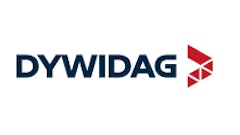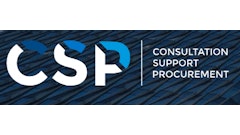
The topic this month covers tax planning for 2019. Not 2018, mind you, but 2019, even though we are nearly 11 months away from year end. But since the Tax Cuts and Jobs Act (TCJA) is so complicated, and can have both positive and negative outcomes depending on decisions you make, I felt a brief discussion is in order to help you deal with this issue in a prudent manner.
I have been bugging you for at least six months to gain an understanding of the TCJA to help avoid mistakes and get maximum benefits from the bill. What you should have done is sit down with a tax expert for an in-depth discussion of your options for both 2018 and 2019 to maximize tax benefits available. I hope you did, because this tax bill is extremely complex and requires your full attention, along with an authority who not only knows the TCJA but the ways to minimize your tax bill for this year and the past one.
Listen Up About New Tax Law
To get you started in the right direction, I refer you to a podcast presented by Ken Hedlund, Somerset CPAs. This construction industry-specific program does a great job explaining the bill (with live examples), and adds direction on how to deal with its complex provisions. You will still be confused after listening to it, but at least you will know what issues to zero in on that need further discussion and guidance. And if you want to ensure you are dealing with a tax person who understands your industry, you can contact Ken for assistance.
The podcast is on the new website ContractorMD.org and is listed under “webinars” in the upper right corner. ContractorMD is a new venture I was supposed to introduce you to this month. I have arranged a group of industry experts to assist contractors in dealing with both financial and operational problems. I won’t go into more detail at this time other than to suggest you check out the website to peruse the list, and feel free to contact anyone on it. Just tell them I asked you to do so and they will take care of you.
Back to the tax issue. When you listen to the podcast, pay attention to the discussion about the different tax calculations required for C-Corps and S-Corps. This is probably the most complex section of the tax bill because the 21% C-Corp rate looks real attractive compared to the 37% individual rate you pay on income received from a pass-through entity. But then, maybe not.
Even though it appears there is a material difference in the tax rates for C-Corp vs. flow-through entities, there is a complex tax review required to truly understand if that difference is really a factor. You will hear examples in the podcast comparing the tax bill for each type of entity. To make this comparison, you are estimating business income, W-2 income and other factors. In fact, you may find yourself discussing how much you get paid and how much you take as distributions to arrive at results you can live with.
I have come across multiple articles stating that you are better off with a flow-through status because of the double tax exposure associated with C-Corps. The articles note that a taxpayer receiving a K-1 from a flow-through entity using the new standard deduction and filing a joint return would have to have adjusted gross income (AGI) of $402,000 to pay tax at the 21% rate. If they use the full 20% OBI deduction, the AGI would have to be $808,000 before being taxed at a 21% rate. The point is do not jump into a C-Corp thinking your overall rate will be 21%.
Also consider that C-Corps are taxed on what is left in the company, and that the compensation and rents you get from the company could give back all the marginal tax rate savings. In addition, a non-deductible such as a dividend would be taxed at about 19% for a total potential tax rate of 39.8% compared to the 37% top rate for an owner of a pass-through entity.
In my estimation, the biggest risk you face is a reversal of TCJA if Democrats control Congress. In short, you don’t want to jump into C-Corp status and then have the rate benefit disappear. And quite frankly, you don’t want to be a C-Corp in the first place.
Bonus Depreciation
Bonus Depreciation changed to allow a 100% deduction for both new and used equipment, which is a big change. You can no longer generate an operating loss carryback, but can carryover any tax losses, with the ability to offset business income from other sources.
Many questions have surfaced asking why Sec 179 is still available and how you would use it now that Bonus Depreciation applies to new and used equipment. The fact is Sec 179 still applies to certain assets that Bonus can’t be applied to. So, the rule of thumb would be to use Bonus first then Sec 179 if you must, keeping in mind that Sec 179 cannot create a net operating loss (NOL).
Even if you use Bonus Depreciation to generate a loss carryover, be aware that a NOL can only offset 80% of the taxable income being offset against the carryover (new TCJA change). However, it can be carried forward indefinitely.
Also pay attention to the book/tax differences when you depreciate assets over a long term for book purposes but expense them 100% in the year purchased for tax purposes. It is easy to forget that those book values on your balance sheet may not be available to reduce taxable income.
Changes in Deductions
Congress also decided to play with your interest deductions. Interest is subject to a disallowance of the deduction in excess of 30% of the business adjusted taxable income (approximate EBITDA). If your average gross revenues for the last three years are less than $25 million, you are exempt from this provision.
TCJA also states entertainment expenses and reimbursed expenses paid to employees are no longer deductible. It’s time to get a better understanding about how entertainment is defined, and how to handle reimbursable employee expenses.
For those with less than $25 million in gross receipts, you now have the option to:
- use the cash basis method of accounting
- write off non-incidental materials and supplies that you would normally inventory
- use completed contract accounting instead of percentage of completion for certain types of work
The cash basis option may have merit, but in cases I have reviewed, it may be a one-year benefit. For example, if you have a significant accounts receivable balance, you could eliminate that total receivable balance from your year-end result and reduce taxable income. Of course, you must do the same with your accounts payable, which would reduce expenses that offset the AR benefit. You must do the analysis, but I find unless you are collecting for work well in advance of the cost of doing the work, there may not be much advantage to the switch.
I encourage you to find out where you stand tax-wise using the various options available to you. Making a small mistake with these tax options could result in a large or overstated tax bill. I would also suggest that if your tax person doesn’t sound like the folks on the podcast, you may be working with the wrong person.




















